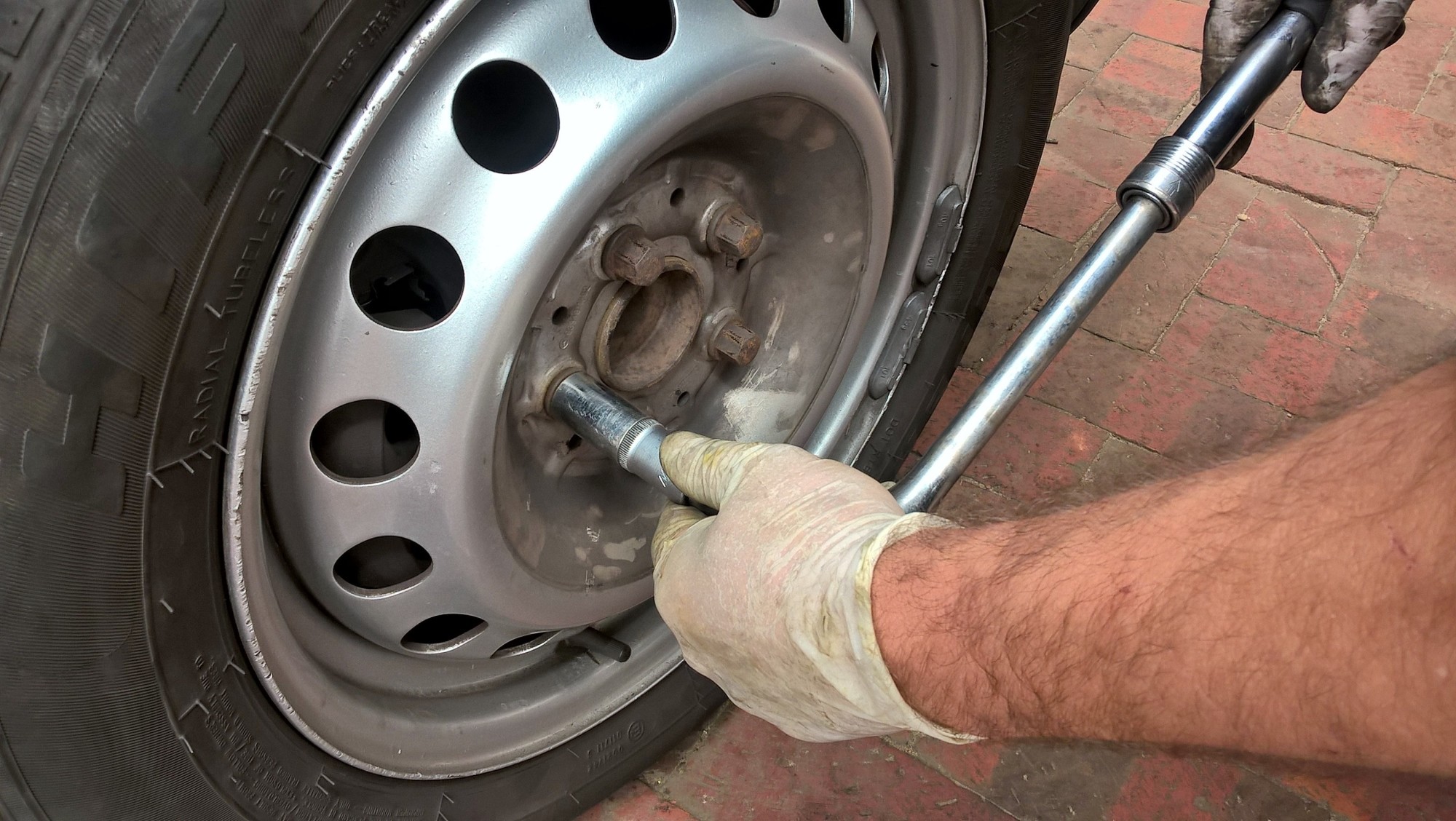For many drivers, it’s their worst nightmare—getting a flat tire.
Sure, you can call AAA or your emergency roadside service, but for faster results, you should learn how to do it yourself. Knowing how to change a flat tire is an important skill for any driver, as it can happen anywhere, at any time—such as a country road where you don’t have phone service.
If you’re wondering how to change a flat tire on a car, it’s simpler than you might think. To learn more, keep reading to find our ultimate guide on how to change a tire, from start to finish.
Wondering How to Change a Flat Tire? First, Find a Safe Place to Pull Over
When it comes to changing a tire, your safety is paramount. Changing a tire on the side of the road can be risky, as other drivers may not be able to see you behind the car.
Whenever possible, we recommend moving the car to a safe place, such as a driveway or parking lot, like these different venues, as these spaces will allow you to work safely, away from fast-moving traffic.
If you do need to change a tire near a highway or busy road, put on your hazard lights and put out any emergency beacons you may have in the car, so other drivers know to keep a safe distance.
Ideally, the safest place to change a tire is a flat surface, as inclines can cause serious accidents.
Gather Everything You Need
Once you and the car are in a safe place, make sure you have everything you need for the tire change in a handy place.
You’ll need a jack, lug wrench, spare tire, and ideally, a rag and some water to clean your hands, as changing tires can be a messy job.
Try to Find the Cause of the Puncture
If your tire has popped and you’re still at the scene, you may want to look for the cause of the puncture, such as a nail or broken bottle. Safely removing it off the road will help avoid any other drivers having the same misfortune.
Plus, you may be able to see where exactly on the tire the puncture happened. Small punctures may be able to be patched, so hold onto your old tire after you take it off, since a mechanic may be able to salvage it for you.
Loosen the Lug Nuts and Jack the Car
Wondering how much to change a flat tire? Your first step in the actual process is to loosen the lug nuts, which are used to keep the tire fastened to the car.
Remember the old adage, ‘lefty loosey, right tighty’? This applies to your car as well, so you’ll want to turn the lugs counter-clockwise to loosen them—but don’t take them off completely.
This can actually be one of the hardest parts of changing a tire, as lug nuts are usually extremely tightly fastened to the car. You may think it’s impossible and that they are never coming off—but they will!
It takes effort and patience, plus some elbow grease, but they will finally start to loosen.
Once loose, you are ready to jack the car. Your jack will raise your car off the ground enough that you can take off the old tire and put on the new one.
You’ll need to crank the jack until the car is off the ground. If you’re unsure how the jack works or where to find it in your car, you should be able to find the answers in your car’s manual in the glovebox.
Put On the Spare
Once you’ve taken off the old tire, you’re now ready to put on the spare. To do this, line up the holes on the rim of the new tire with the lug nuts and push in.
Then, you’ll use the wrench and the lug nuts again, this time to securely fasten the new tire onto the base. Attach it as tightly as you can, so you don’t risk it coming off once you start driving again.
You can then lower the jack to place the tire back on the ground, then use the wrench to tighten even further.
You’re just about done! Once you clean up and put your tools away, you’ll be ready to drive off safely.
Replace Your Spare and Purchase a New Tire
If your car has a full spare, then you’re fine to keep driving around. However, most cars have what’s called a donut, which is a temporary spare tire, not meant for long-term use.
Donuts are only designed to get you safely home or to a mechanic, and they shouldn’t be driven on for more than 50 miles, or at high speeds.
The best course of action is to go to a tire shop or mechanic as soon as possible, as they can replace your damaged tire with a new one.
Drive Safely with These Top Tips
Now that you know more about how to change a flat tire, hopefully you feel more confident with the process. Changing a tire can be intimidating, especially if you don’t have anyone to help you, but the process is much simpler than most people realize.
A flat tire can happen anytime, so anyone getting behind the wheel of a car should know how to safely change a tire. That way, you can drive with independence and freedom, knowing you’re capable of looking after your car.
You can even practice at home, ensuring you’re ready to go in case of an emergency. Get started today and you’ll feel more comfortable behind the wheel!
Did you find this helpful? If so, please keep browsing our site for more great articles.

